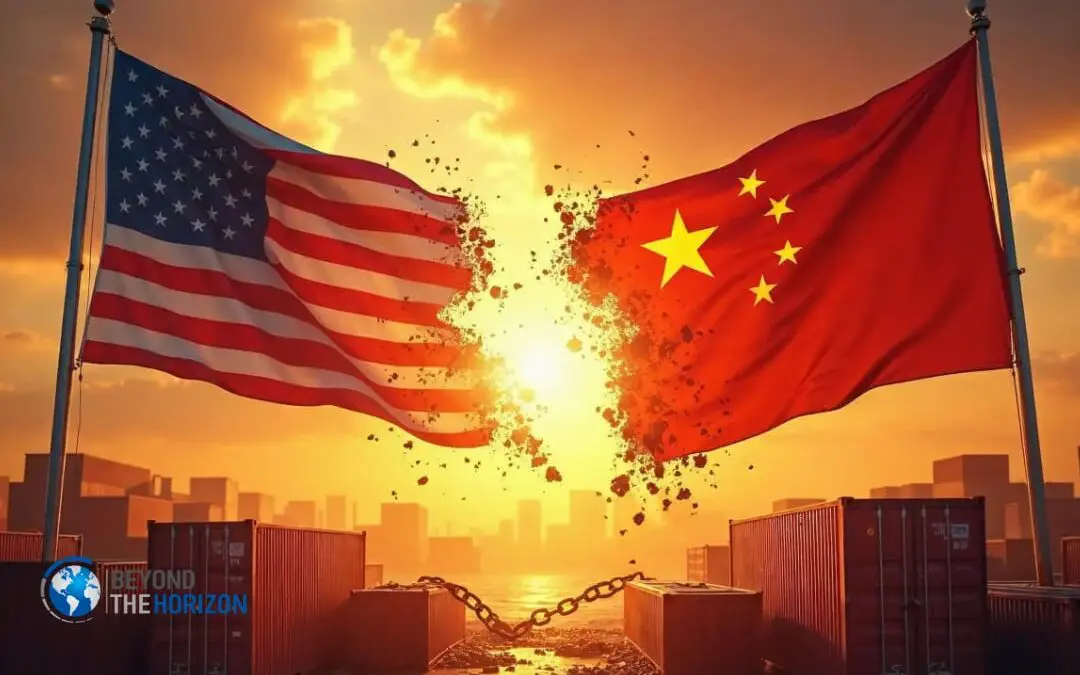In recent years, there has been a significant loophole in the U.S. import system that permitted retailers, particularly e-commerce giants, to ship goods directly from China to American consumers. This route avoided the usual customs tariffs that are imposed on imported goods, thus allowing both retailers and consumers to benefit from lower prices. Now, as the government takes measures to close this loophole, it is anticipated that this could lead to an increase in consumer prices, impacting shoppers across the nation.
This tariff loophole is specifically tied to a provision that allows packages valued under $800 — known as de minimis shipments — to enter the U.S. with minimal scrutiny and without paying import duties. Originally, this rule aimed to expedite the process of low-value shipments, which was seen as a practical measure to facilitate smoother trade and logistics. However, the rule has inadvertently benefited Chinese sellers on platforms like Amazon, eBay, and others, giving them a price advantage over U.S. competitors who must pay the duties and might face more rigorous checks for similar products.
Retail products ranging from electronics, clothing, to household gadgets are often sold through these e-commerce platforms and shipped directly to consumers under this tariff exemption. The consequence has been a burgeoning flood of goods entering the U.S. directly from China, effectively undermining domestic manufacturers and retailers who cannot compete with these lower-priced imports. This situation has also raised concerns about potential abuses such as undervaluation or misclassification of goods to fit within the de minimis threshold.
The U.S. government’s decision to reconsider this provision comes amid broader trade tensions with China and is part of an effort to create a more level playing field for domestic manufacturers and sellers. The proposed changes will potentially involve lowering the $800 threshold for duty-free imports, enhancing scrutiny at customs, or possibly eliminating the exemption entirely for shipments from certain countries, including China.
While this policy shift aims to protect domestic businesses from unfair foreign competition, it is likely to result in higher prices for consumers. Once the loophole is closed, Chinese products that were once cheaper due to tariff exemptions will possibly be equal or higher in price compared to those offered by U.S. based retailers. This change may moderate the large volume of imports and could encourage consumers to turn towards locally produced goods, potentially boosting domestic industries.
For consumers accustomed to the affordability and convenience of purchasing inexpensive goods online from China, this adjustment in pricing structure could be significant. It could influence purchasing decisions and consumer behavior, particularly at a time when many are already dealing with economic uncertainties and tightened budgets due to various global financial pressures.
Furthermore, the policy change is also expected to have implications for e-commerce platforms that have heavily relied on the influx of cheap goods from China to attract and retain customers. They may need to reassess their business models, supplier relationships, and pricing strategies in response to these new regulatory measures.
As discussions continue and policies are redefined, it will be crucial for all stakeholders, including policymakers, business leaders, and consumers, to navigate these changes carefully. The ultimate goal will be to strike a balance between protecting domestic economic interests and ensuring that U.S. consumers continue to have access to a diverse array of products at reasonable prices. Analysts will also be closely watching the effectiveness of these measures in rectifying trade imbalances and their broader impacts on the U.S.-China economic relationship.










